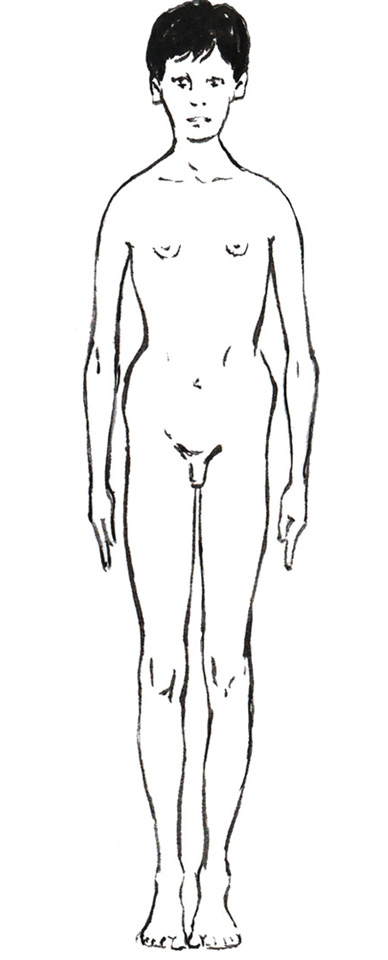Klinefelter's Syndrome in Children
A geneticist can diagnose Klinefelter's Syndrome before your son is born through a foetal cytogenetic analysis.
A paediatrician may suspect Klinefelter's Syndrome if an infant boy has:
- Developmental delay
- Undescended testicles (cryptorchidism)
- Pea-sized testicles
- Hypospadias (urine dribbles out of an opening on the underside of his penis)
However, 75% of boys with KS develop normal height and weight until they reach age four or five.
A paediatrician may investigate a school-age boy for Klinefelter's Syndrome if he has this characteristic appearance:
- Tall stature.
- Knock-knees (genu valgum).
- High arches (pes cavus).
- Protruding lips.
- Projecting jaw (prognathism).
- Very widely-spaced eyes (hypertelorism).
- If he is Caucasian or African American, epicanthal skin folds on his upper eyelids at the inner corner.
- Poor coordination.
- Fused bones in his forearms that make it difficult for him to rotate his arms (radioulnar synostosis).
- Quiet, tractable personality with occasional tantrums and aggression.
Parents should ask a paediatrician or family doctor to investigate a boy for Klinefelter’s syndrome if he has:
- Pea-size testicles.
- Attention Deficit Hyperactivity Disorder (ADHD).
- A learning disability (especially dyslexia, reading difficulties, and/or data retrieval problems).
- Mental retardation (IQ drops 15 points for each additional X chromosome).
- Poor expressive and receptive language skills.
- Poor short term memory.
- Osteoporosis (bone thinning).
- Lack of sporting ability.
There are many variants of KS and not all KS children will exhibit or display some or all of the above signs and symptoms. A rare few may even have normal size testes, how it is important that if some of the above exist that your doctor exclude KS as a possible cause.
See your doctor
Two exceptional websites are the US National Institute of Child Health and Development and the Australasian Paediatric Endocrine Group.


